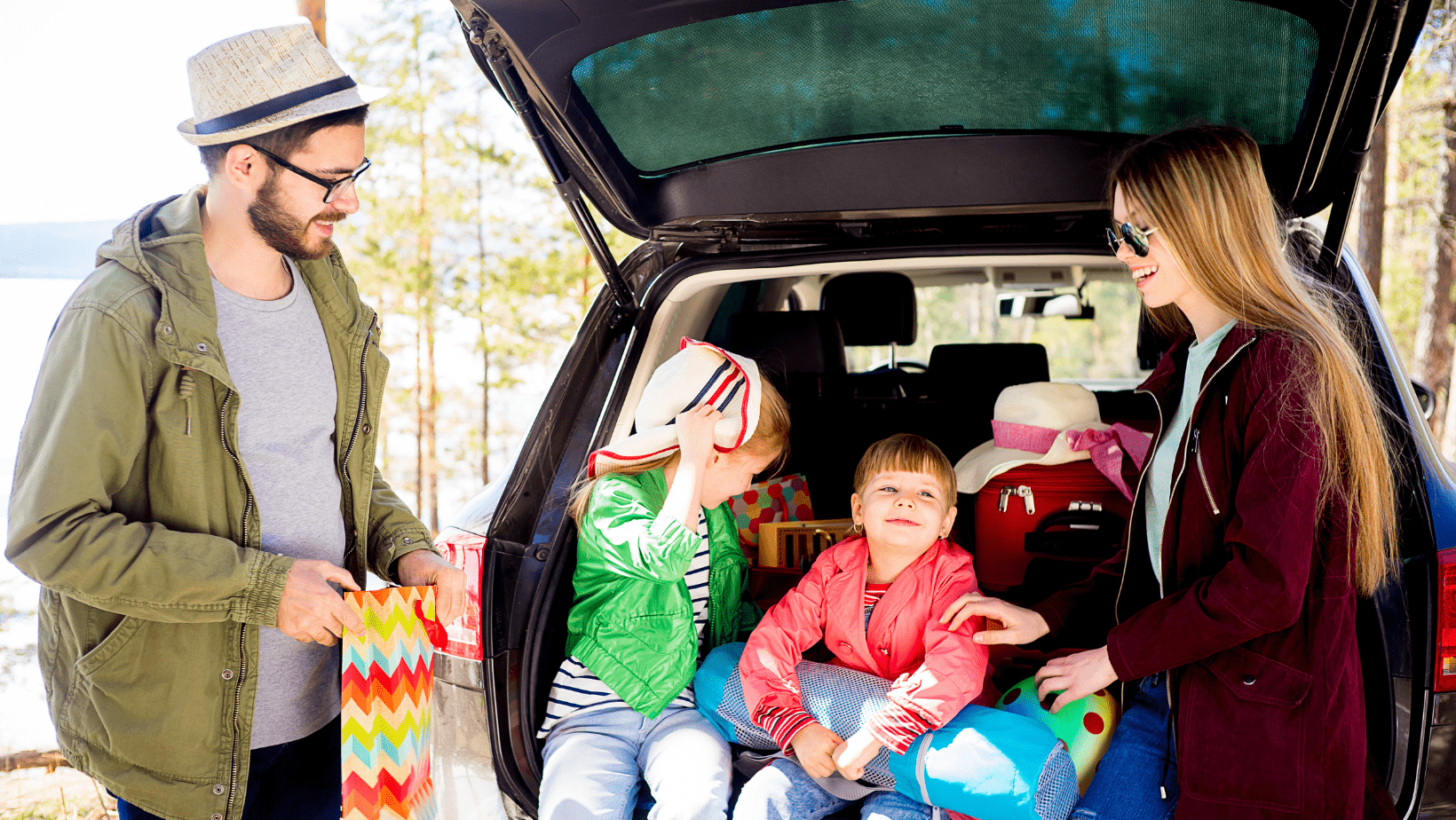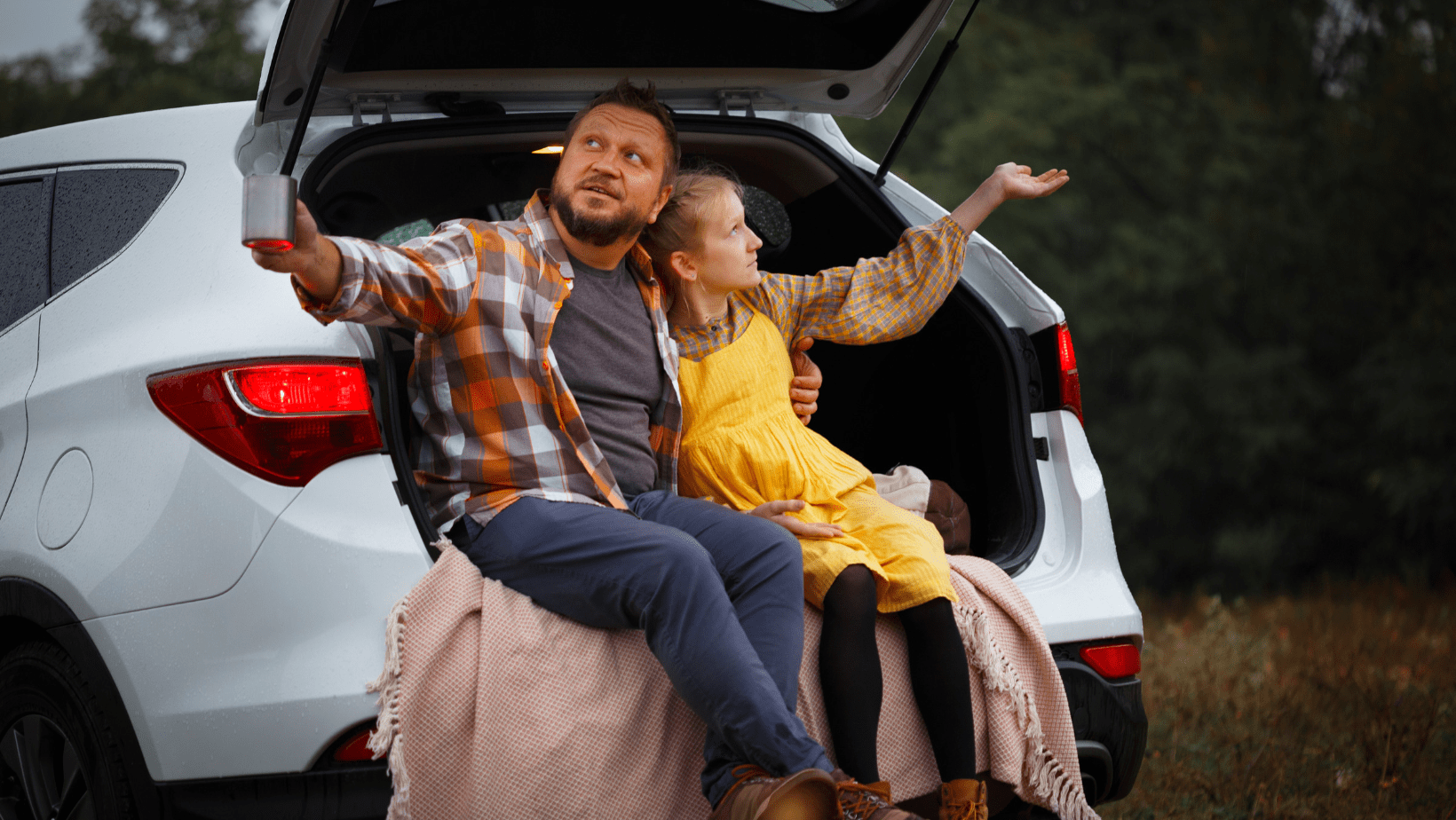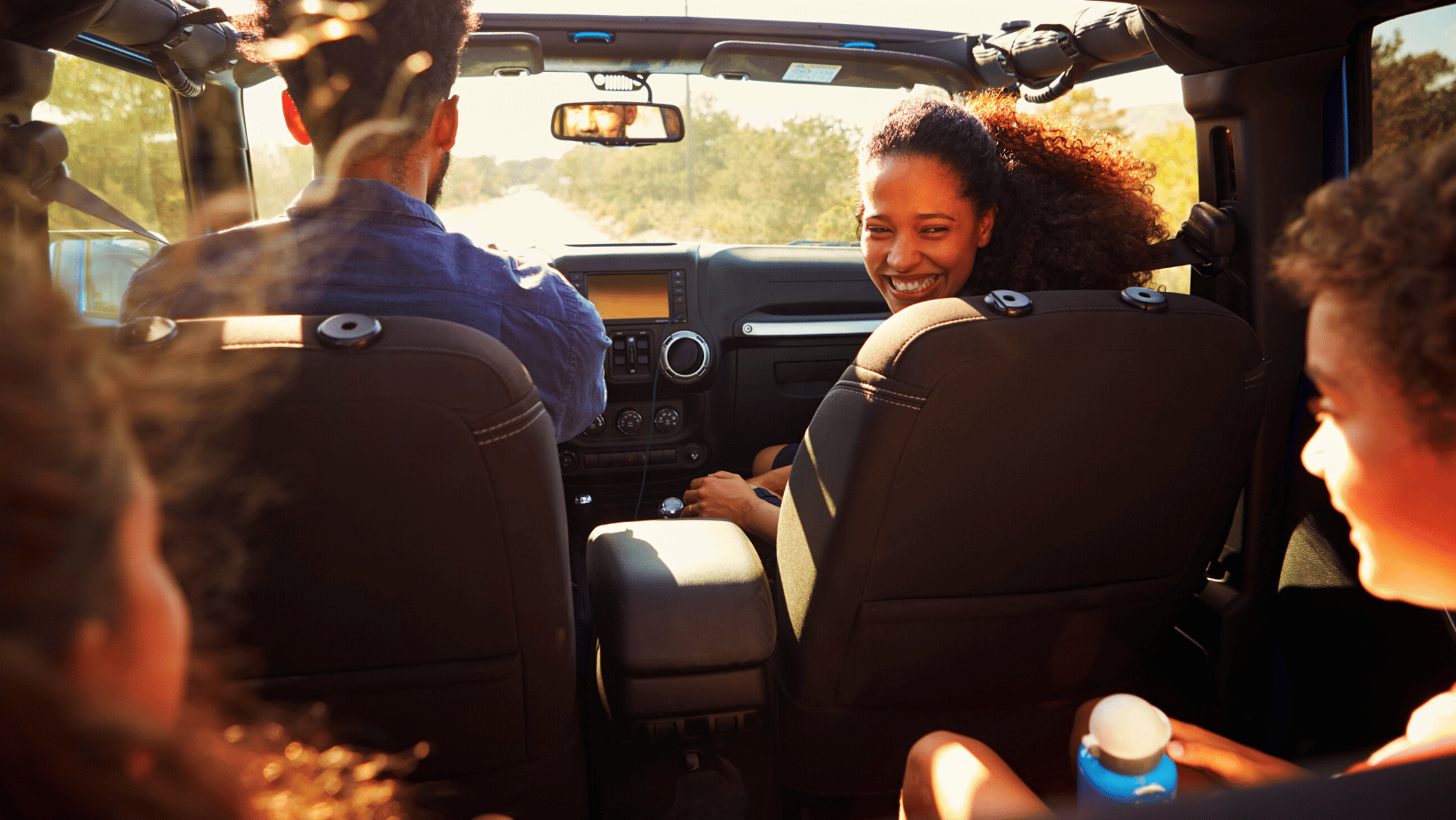Are you looking for an exciting adventure that the whole family can enjoy? Well, in that case, look no further than a family road trip.
With a little planning and preparation, a road trip can be an unforgettable experience for you and your loved ones. But where do you start?
In this blog, we'll cover the dos and don'ts of planning a successful family road trip, from creating a packing list to involving everyone in the planning process.
By following these tips, you can ensure that your family road trip is a fun and stress-free experience that everyone will cherish for years to come.
So, fasten your seatbelts, grab some snacks, and let's hit the road.
Dos of Planning a Successful Family Road Trip
A family road trip can be one of the most memorable experiences for you and your loved ones. But just like with any adventure, it's important to have a plan.
In this section, we'll cover 7 dos of planning a successful family road trip. These tips will help ensure that your trip is enjoyable, stress-free, and full of unforgettable memories. And don't forget—CAA Travel is here to help with your travel planning needs!
1. Do plan ahead
One of the most important things to remember when planning a family road trip is to plan ahead.
You don't want to hit the road without a clear idea of where you're going or what you'll do along the way. Research your route and look for interesting places to visit, such as national parks, museums, or scenic routes. Check the travel time for each destination and plan your itinerary accordingly.
For example, let's say you're planning a road trip from Regina to Jasper National Park. You'll want to research the best route to take, such as the route through Edmonton or the one through Calgary.
Consider stopping in places like Banff or Lake Louise along the way and check out popular activities like hiking or wildlife tours.
It's also important to check out accommodation options before you hit the road.
Are you planning on camping, staying in hotels, vacation rentals, or a mix of all three? Make sure to book your accommodation in advance, especially during the peak travel season.
Finally, don't forget to check the weather forecast for your destinations.
This will help you pack the appropriate clothing and gear for your trip. For instance, if you're planning on hiking in the Rockies, you'll want to bring proper hiking boots, rain gear, and warm clothing.
2. Do create a packing list
Packing for a family road trip can be a daunting task, but creating a packing list can help alleviate the stress. Start by making a list of all the essentials that you'll need on your trip.
This can include snacks, water, a first-aid kit, sunscreen, bug spray, and entertainment for the kids. It's important to bring plenty of snacks and water to keep everyone hydrated and energized on the drive.
You can also use a plastic fishing tackle box to store some snacks so that they are all easy to access at once and are kept separate from each other.
When packing for the trip, make sure to pack for the climate you'll be traveling through.
Bring clothes that are comfortable and suitable for the weather conditions. It's also a good idea to pack warm clothing, especially if you're traveling to a cooler destination.
Don't forget to pack entertainment for the kids, such as books, board games, and electronic devices.
This can help keep them occupied during the long drive and prevent boredom. You can also involve your kids in the packing process by letting them choose their own activities and toys to bring along.
It's also important to pack a first-aid kit with essentials like band-aids, antiseptic wipes, and pain relievers. You never know when someone might get a minor injury, and it's better to be prepared.
Grab our Road Trip Preparation Checklist and reduce the stress of packing
3. Do involve everyone in the planning
Getting everyone involved in the planning process can be an exciting way to build excitement. It can also ensure that everyone's interests and preferences are considered when planning the itinerary.
Your kids might want to visit a water park while your spouse might be interested in visiting a museum.
Even if Uncle Bob suggests stopping at every roadside attraction and Aunt Sally insists on packing enough snacks for a month-long journey, remember that compromise is key.
Who knows, maybe you'll discover a hidden gem thanks to your nephew's suggestion to visit the world's largest coffee pot.

To involve everyone in the planning process, consider holding a family meeting or brainstorming session. This can be done in person or virtually, depending on everyone's location and availability.
During the meeting, encourage everyone to share their ideas and preferences for the trip. You could also create a shared document or spreadsheet where everyone can add their ideas and suggestions.
Another way to involve everyone in the planning process is to delegate tasks.
For example, you could assign one person to research and book accommodation, another to plan the meals and snacks, and another to create a playlist of road trip tunes.
This not only takes some of the planning off your shoulders but also ensures that everyone is invested.
4. Do set realistic expectations
Setting realistic expectations is crucial for ensuring a successful family road trip.
It's easy to get excited and want to pack in as many activities as possible, but it's important to remember that things may not always go as planned.
It's essential to be flexible with your schedule and have a backup plan in case of unexpected delays.
One common issue during road trips is traffic. You could be cruising down the highway, and suddenly, there's a long line of cars due to road construction or an accident.
In such cases, it's best to remain calm and patient, instead of getting frustrated and agitated.
Similarly, detours are also a possibility during a road trip. You may come across a beautiful scenic route that you hadn't planned on taking, or a local attraction that you hadn't heard of before. Embrace these unexpected experiences and take advantage of them, rather than sticking rigidly to your planned route.
Lastly, it's crucial to have a backup plan in case of emergencies. Carry a first-aid kit and make sure everyone knows where it is. Have a spare tire, and make sure that it's inflated and in good condition.
Also, keep emergency phone numbers handy and be aware of the nearest hospitals or medical facilities in case of any health-related issues.
5. Do take breaks
Long hours on the road can turn even the most patient travellers into "are we there yet?" champions. Therefore, taking breaks during a long road trip is essential to keep everyone refreshed and energized.
It not only allows you to stretch your legs but also provides an opportunity to explore new places, create memorable experiences along the way, and prevent any backseat rebellion. 🙃
Consider the duration of the journey and schedule regular breaks accordingly. A good rule of thumb is to aim for a break every two to three hours, depending on the needs of your family.
This will help prevent fatigue and keep everyone comfortable throughout the trip.
During your breaks, make sure to find safe and convenient rest areas or service stations. These stops usually have restrooms, picnic areas, and sometimes even playgrounds for kids to enjoy.
Take advantage of these amenities to freshen up, use the facilities, and have a quick snack or meal.
These stops can also add an element of adventure and discovery to your road trip. Look for quirky roadside attractions or scenic viewpoints that make you do a double photograph take.
Who knows, you might stumble upon a peculiarly shaped rock that becomes the backdrop for your impromptu family photoshoot and leads to a legendary road trip story.
During your breaks, you can also encourage everyone to engage with their surroundings. Play a game of catch, have a picnic, or simply take a leisurely stroll to appreciate the scenery.
6. Do prioritize safety
Prioritizing safety is paramount when embarking on a family road trip adventure. Not only does it ensure the well-being of everyone in the vehicle, but it also sets a positive example for your children.
First and foremost, make sure that everyone is properly restrained with seat belts or appropriate child restraints. It's like giving your vehicle a big, reassuring hug.
Seat belts are your superhero sidekicks, ready to protect you from unexpected bumps in the road. Even if your kids claim they have "Superman powers," they still need to be securely buckled up too. 😊
Obeying traffic laws may not be the most thrilling part of your adventure, but it's very important.
Stick to the speed limits, resist the temptation to become a race car driver, and follow all road signs and signals. They're like a secret code guiding you through your epic road trip quest.
Also, let's not forget the importance of setting some ground rules with your little adventurers. Before the wheels start rolling, have a family discussion about road trip safety.
Explain to your children the importance of not opening car doors while the vehicle is in motion. It's like trying to exit a spaceship while it's still orbiting the Earth -- not a good idea.
Also, remind them to keep their hands, feet, and magical wands (if they happen to have any) away from the driver, ensuring their undivided attention is on the road.
Another aspect to consider is ensuring your vehicle is in good working condition before setting off on your adventure. Check the tire pressure, the fluid levels, and make sure the brakes are working properly.
And remember that CAA Saskatchewan is always there for you in case you run into any roadside issues. Download the CAA mobile app and travel with confidence knowing that we’ve got you covered.
7. Do have fun
And lastly, remember that a family road trip is about spending time together and making memories.
Don't forget to relax, enjoy the journey, and have fun even when things get a little hectic. Capture the moments through photographs and videos and cherish the memories for years to come.
The journey itself is just as important as the destination and sometimes the most magical moments happen when you veer off the planned route.
Imagine stumbling upon a charming roadside cafe that serves the fluffiest pancakes you've ever tasted.

Or maybe you spot a field of sunflowers in full bloom and decide to pull over for a whimsical photoshoot. These detours are the secret ingredients that make your road trip recipe extra special.
Oh, and let's not forget the power of a good playlist. Curate a selection of your family's favorite songs to accompany you on this epic adventure.
Belt out the lyrics together and let the music be the soundtrack of your journey. Trust us, the joy that comes from a spontaneous family sing-along to a cheesy '90s pop song is simply unmatched.
Don'ts of Planning a Successful Family Road Trip
What not to do when planning a family road trip is just as important as knowing what to do.
While the journey holds the promise of unforgettable adventures and cherished memories, certain pitfalls can turn it into a chaotic and less-than-ideal experience.
Here are 6 'don'ts' of planning a successful family road trip.
1. Don't overpack
We get it, the temptation to bring along every imaginable item 'just in case' can be strong. But trust us when we say that overpacking is the enemy of a stress-free family road trip.
Your car has limited space and filling it to the brim with unnecessary items can quickly transform it into a cluttered chaos. So, always pack smart and pack light.
First and foremost, resist the urge to pack your entire wardrobe. Think about it, do you really need five pairs of shoes for a weekend getaway?
While it's tempting to plan for every fashion scenario, remember that comfort and practicality are key.
The same is true with toys as well. Your children might insist on bringing their entire collection of stuffed animals with them. And before you know it, your backseat will start resembling a stuffed animal zoo.
Instead, encourage them to select their absolute favorite cuddly companion, ensuring there's still plenty of space for the necessities and more importantly for people to sit.
Another common overpacking pitfall is bringing an excessive number of toiletries.
Sure, personal hygiene is important, but do you really need three different brands of shampoo, four types of body lotion, and enough toothpaste to last a year?
Opt for travel-sized containers or invest in space-saving multi-purpose products instead. Not only will this lighten your load, but it will also free up precious space in the bathroom bag.
2. Don't forget to budget
Ah, the allure of a family road trip can sometimes make us forget about our financial limitations. However, it's crucial to plan your expenses in advance to avoid any financial stress during the trip.
To start, set a realistic budget for your trip. Consider all the major expenses, such as fuel, accommodation, meals, and activities, and allocate a specific amount for each category.
It's essential to be mindful of your financial capabilities and avoid going overboard, especially when it comes to activities that may have additional costs.
For example, imagine you have your heart set on exploring the fascinating history of the RCMP at the RCMP Heritage Centre in Regina. As you plan your itinerary, don't forget to factor in the admission fees and any additional costs, such as parking or souvenirs, within your predetermined budget.
Another important aspect of budgeting is planning your meals. Dining out for every meal can quickly become a financial drain, so consider packing snacks and simple meals for the road.
Not only will this save you money, but it can also add a touch of adventure as you enjoy a picnic at a scenic viewpoint or savour sandwiches at a roadside park.
Additionally, you can also use your CAA membership and enjoy exclusive savings at various restaurants.
And lastly, watch for unexpected expenses that may arise during your journey. Flat tires, emergency repairs, or sudden detours can throw your budget off track if you're not prepared.
Consider setting aside a small emergency fund to tackle these unforeseen circumstances without jeopardizing the rest of your trip. Or better off, just get a CAA membership and have peace of mind.
3. Don't be too rigid with your itinerary
While it's essential to have a general plan, it's equally important to be flexible and embrace the beauty of unexpected detours and spontaneous adventures along the way.
Imagine you're cruising along the Qu'Appelle Valley, heading towards the renowned Last Mountain Lake National Wildlife Area. As you drive, you spot a colorful sign advertising a small-town festival just a few kilometers off your planned route. Curiosity piques, and your adventurous spirit beckons.
Will you stick to the itinerary or veer off to explore this unexpected detour?
Embrace the spontaneity as such detours often lead to the most memorable experiences and allow you to connect with the true spirit of Saskatchewan's communities.

Even weather conditions may necessitate changes to your itinerary. Saskatchewan's ever-changing climate can present opportunities or challenges that are beyond your control.
For instance, imagine planning a hike in the stunning Grasslands National Park, only to wake up to a day of heavy rain. Instead of feeling disheartened, seize the moment and explore any indoor attractions.
4. Don't rely too heavily on technology
In this digital age, it's easy to become overly dependent on our smartphones and GPS devices.
But it's important to remember that phones can run out of battery, signal reception may be weak in remote areas, or GPS devices can occasionally lead us astray.
Therefore, always have a backup plan in case technology fails, especially when embarking on a road trip filled with vast landscapes and captivating destinations.
For instance, imagine a situation where you're driving through the awe-inspiring Cypress Hills Interprovincial Park, with its pristine forests and rolling hills.
Suddenly, you realize that your phone battery is about to die, and you're relying on it for directions to your next destination, which you might not remember off the top of your head.
That’s a scary thought, isn’t it? But don’t worry. Before setting off on your road trip, invest in a physical road map or print out directions to important locations.
Not only will this serve as a valuable backup if technology fails, but it can also add a touch of nostalgia and adventure as you navigate the roads like explorers of old.
Another handy backup option is to research and write down important addresses, phone numbers, and contact information for accommodations, attractions, and emergency services.
Having this information readily available will save you from feeling lost and disconnected in case your digital devices give up on you.
And finally, don't underestimate the power of good old-fashioned human interaction.
Saskatchewan is known for its warm and friendly communities, so don't hesitate to ask locals for directions or recommendations as they would surely be able to provide some valuable insights.
5. Don't ignore your car's maintenance
Before you hit the road, don't forget to ensure that your trusty vehicle is in good condition.
Neglecting car maintenance can quickly turn your dream road trip into a series of frustrating breakdowns and unexpected detours.
Start with the tires. Saskatchewan's diverse landscapes, from prairies to rolling hills, demand reliable and well-maintained tires. Check the tire pressure, tread depth, and overall condition to ensure they are roadworthy. Remember, a flat tire in the middle of nowhere can quickly dampen the spirit of adventure.
Furthermore, don't overlook regular oil changes and fluid checks. Engine oil plays a vital role in keeping your vehicle running smoothly, especially during long drives.
Make sure to check the oil levels and follow the recommended oil change intervals to keep your engine purring like a contented prairie cat.
Don't forget about your vehicle's cooling system, especially during Saskatchewan's scorching summer months. Inspect the coolant levels and ensure the radiator and cooling fan are functioning correctly.
And finally, ensure that your vehicle's brakes, lights, and battery are in good working order.
From short distances to long road trips, explore more with confidence with CAA
6. Don't forget to take care of yourself
Amidst the hustle and bustle of planning, packing, and navigating, it's crucial not to overlook your own well-being. Remember, you're an essential part of this adventure, and taking care of yourself is vital.
Firstly, staying hydrated is key. You may be spending long hours on the road or in the sun. Remember to keep a water bottle handy and drink plenty of fluids throughout the trip.
Hydration not only helps maintain your energy levels but also keeps you refreshed and focused, allowing you to fully appreciate the beauty that surrounds you.
In addition to staying hydrated, getting enough rest is crucial for your overall well-being during a road trip. Long drives, early mornings, and late nights can take a toll on your energy levels and enjoyment.
Make it a priority to get a good night's sleep and take breaks throughout the day to recharge. Find a comfortable spot to stretch your legs, relax, and enjoy the beauty of Saskatchewan's landscapes.
Lastly, don't forget to nourish your body with healthy snacks and meals.
It can be tempting to rely on convenience store snacks or fast food during a road trip, but fueling your body with nutritious food will help sustain your energy levels and keep you feeling your best.


